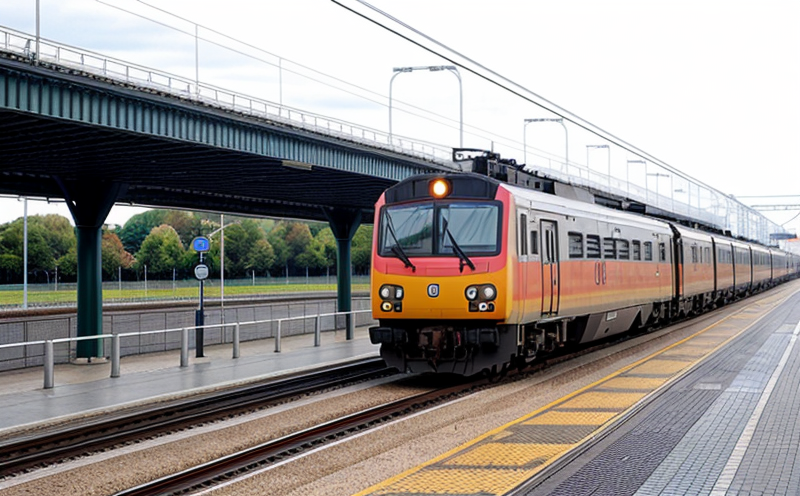EN ISO 14837 Ground Vibration and Noise from Rail Transport Testing
The EN ISO 14837 standard is specifically designed to measure ground vibration and noise generated by rail transport systems. This testing ensures that the levels of noise and vibration are within acceptable limits, thereby safeguarding public health and minimizing environmental impact.
Ground vibrations and noise from railway transport can have significant effects on nearby communities. The EN ISO 14837 standard provides a comprehensive framework to quantify these parameters accurately using specialized equipment such as accelerometers placed along the trackside. These devices capture data on both vertical and lateral displacements, which are then processed into meaningful metrics.
The standard defines several key performance indicators including peak particle velocity (PPV), root mean square values of vibration, and sound pressure levels at various frequencies. Compliance with these criteria helps ensure that rail transport operations comply not only with local regulations but also international best practices.
From an engineering perspective, understanding how different components contribute to overall performance is crucial. For instance, wheel-rail interaction plays a significant role in generating unwanted sounds and vibrations. By analyzing this aspect during testing, engineers can identify areas for improvement or optimization without compromising safety standards.
In terms of practical implementation, the process involves setting up monitoring points at specified distances from the railway line before recording data over extended periods under normal operating conditions. Once collected, this information is analyzed to determine if it meets the specified thresholds outlined in EN ISO 14837. If discrepancies are found, corrective actions may be necessary until all parameters fall within acceptable ranges.
It's important to note that while rail transportation offers numerous benefits such as reduced emissions compared to road-based alternatives, it also presents unique challenges related to noise and vibration control. Proper adherence to standards like EN ISO 14837 ensures these potential issues are addressed early in the design phase or through ongoing maintenance practices.
- Peak Particle Velocity (PPV): Measures maximum displacement of particles caused by ground motion due to passing trains.
- Root Mean Square Values: Represents average power delivered over time, useful for assessing continuous noise sources.
Benefits
The implementation of EN ISO 14837 testing brings numerous advantages to stakeholders involved in rail transport projects. Firstly, it ensures compliance with international standards which can help avoid legal issues and penalties associated non-conformance.
- Environmental Protection: By reducing noise levels, the standard contributes towards preserving local ecosystems and promoting better quality of life for residents living close to railway lines.
- Safety Enhancement: Accurate measurement facilitates early detection of potential hazards that could affect passengers' comfort or even pose risks to their safety.
Why Choose This Test
Selecting EN ISO 14837 ground vibration and noise testing for your project offers several compelling reasons. Notably, it provides a standardized method widely accepted across Europe and beyond, ensuring consistent results wherever the tests are conducted.
- International Recognition: With its alignment to internationally recognized standards, this test lends credibility to any findings or recommendations made based on its outcomes.
- Precision Measurement: Advanced instrumentation used in these assessments allows for precise quantification of noise and vibration levels, providing reliable data that informs decision-making processes.
International Acceptance and Recognition
The EN ISO 14837 standard has gained significant traction among countries across the globe due to its robustness and applicability. It serves as a benchmark for industries seeking to establish benchmarks regarding noise pollution from rail transport.
Several countries have adopted parts of this standard into their national legislation, recognizing its value in mitigating adverse effects on human health and environment caused by excessive noise and vibration. This widespread acceptance underscores the importance of following such guidelines when planning or implementing rail-related projects.





